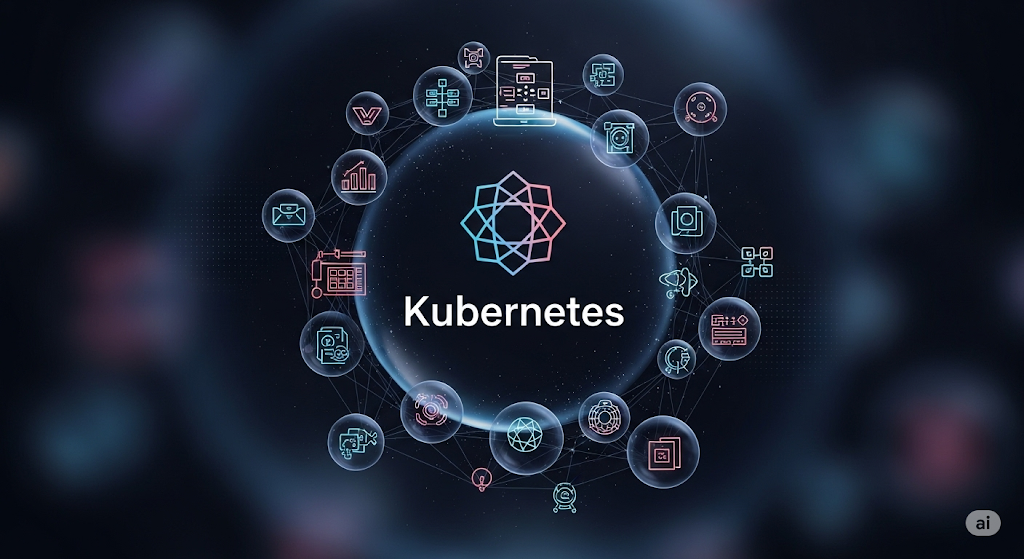We’ve admittedly been quiet about Kubernetes in our Cloud Fest Chronicles, but its influence on the industry has become too big to ignore.
There’s a disease in our industry called “Résumé-Driven Development” (RDD), and it’s the quiet, unacknowledged force behind a million bad technical decisions. It’s the practice of choosing a technology not because it’s the best fit for the project, but because it’s the best fit for your next job interview.
An engineer, wanting to stay relevant in a fast-moving market, pushes for the hot new thing. A manager, wanting to attract top talent, puts that same hot new thing in the job description. It’s a self-perpetuating cycle that has little to do with building a better product.
And right now, Kubernetes is the undisputed champion of RDD.
Your App Isn’t Google – You Don’t Need Kubernetes
The pressure to adopt it is immense. It’s positioned as the “one true way” to do modern infrastructure. But for most teams, this choice, often made for career reasons, backfires spectacularly. Instead of accelerating, you get bogged down in a swamp of complexity you never needed to cross. You spend more time fighting your infrastructure than building a product people love.
Don’t get us wrong. This is what Google runs YouTube on. It’s what Netflix used to build its empire of distributed systems that would make your head spin. But somewhere along the way, the industry convinced itself that every company needs the same infrastructure complexity as a company serving billions of video streams.
This guide is for the startups, the scale-ups, and the mid-sized businesses that make up the vast majority of the economy. It’s for the teams who feel the immense pressure to adopt K8s because it’s “what modern companies do,” but have a nagging suspicion it might be a wildly inappropriate, over-engineered solution for their actual needs.
Who is this guide for?
- For the CTO or Founder: You are accountable for the budget, the hiring plan, and the ultimate success of the product. You need to know if your infrastructure choices are creating a competitive advantage or an expensive, productivity-sapping liability.
- For the Engineering Manager: Your job is to maximize your team’s velocity and shield them from burnout. You need to know if your platform is empowering your developers or drowning them in needless complexity.
- For the Developer: You are in the trenches, writing the code and fighting the fires. You need to know if the tools you are using are helping you ship great software or just adding friction and frustration to your daily work.
Kubernetes alternatives that work for you, not against you
If the Kubernetes path feels wrong, it’s because there are better, simpler, and more efficient alternatives that are purpose-built for your specific needs. So what can replace Kubernetes and in what situation?
Scenario 1: Your goal is maximum speed and iteration.
Choose: A Platform as a Service (PaaS)
- Who it’s for: Startups, product teams in a rapid prototyping phase, and any organization where developer velocity is the most important metric.
- The pitch: A PaaS abstracts away the entire server infrastructure. The workflow is its simplest form: you push your code, and the platform handles the rest. This allows a lean team to remain focused on building the product, which is the most critical factor for finding product market fit. Your engineers spend their time building your business, not managing servers.
- Examples: Heroku, AWS Elastic Beanstalk, Google App Engine.
Your engineers spend their time building your business, not managing servers. Before any major infrastructure decision, it’s wise to assess if your organization is truly ready for the cloud and what model fits best, a process that involves a practical readiness assessment.
Scenario 2: You want control over containers, without the chaos.
Choose: A simple orchestrator
- Who it’s for: Teams that are comfortable with containers and have a handful of microservices, but lack a dedicated DevOps army to manage a complex platform.
- The pitch: These tools provide the core benefits of container orchestration (service discovery, load balancing, declarative deployments) without the steep learning curve and operational nightmare of Kubernetes. It’s the 80/20 rule applied to infrastructure.
- Examples: Docker Swarm, which uses the same Docker tools your team already knows. HashiCorp Nomad, a lightweight and flexible orchestrator that famously convinced the Internet Archive to migrate away from Kubernetes due to its simplicity.
Scenario 3: Your traffic is unpredictable and spiky.
Choose: Serverless / Function-as-a-Service (FaaS)
The pitch: Maintaining a statically provisioned cluster for this workload is incredibly capital inefficient; you pay for idle capacity most of the time. With Serverless, you pay only for the compute time you actually use. The system scales from zero to millions of requests automatically. It’s the most financially efficient model for this common business need. After a major sales outage, the LEGO company refactored its platform to a serverless architecture to handle huge traffic spikes seamlessly.
Who it’s for: Applications with highly variable workloads, like e-commerce sites on Black Friday, media sites during breaking news, or any event-driven service.
Examples: AWS Lambda, Google Cloud Functions, Azure Functions.
Quick decision framework
| Goal / Constraint | Choose | Tools / Resources |
| Need speed, fast iteration | Platform-as-a-Service | Heroku, App Engine |
| Want control with minimal complexity | Lightweight Orchestrator | Docker Swarm, Nomad |
| Handling bursty, spiky workloads | Serverless / FaaS | AWS Lambda, Cloud Functions |
| Running 100+ services with 24/7 traffic | Kubernetes (maybe) | GKE, EKS |
When Kubernetes IS the right choice
To be clear, Kubernetes is a phenomenal tool for the right problems. Acknowledging its strengths helps clarify if you have the challenges that justify its complexity. K8s is likely the right choice if:
- You are operating at a significant scale, managing hundreds of microservices with high, 24/7 traffic demands.
- You require a true multi-cloud or hybrid-cloud strategy, needing to move workloads seamlessly between different cloud providers or on-premise data centers.
- You already have a mature DevOps or SRE team with deep experience in distributed systems and container orchestration.
- You are building an infrastructure product (like a database-as-a-service) where orchestration is a core competency, not just a means to an end.
Already using Kubernetes and regretting it? Here’s how to escape
If you’ve already adopted Kubernetes and are feeling the pain of its complexity, you’re not stuck. You can strategically simplify your stack.
- Offload the control plane: The easiest first step is to migrate from self-managed Kubernetes to a managed service like Amazon EKS, Google GKE, or Azure AKS. This eliminates the burden of managing updates, security, and availability for the control plane.
- Move non-critical services first: Identify stateless applications or development/staging environments. Move these to a PaaS or Serverless platform to gain immediate operational relief and build team confidence with simpler tools.
- Explore a lighter-weight footprint: For smaller clusters or edge deployments, consider replacing your full Kubernetes distribution with a certified, lightweight alternative like K3s or K0s. They offer the same APIs with far less operational overhead.
- Split workloads by need: Not everything needs to run on the same platform. Keep your complex, stateful services on Kubernetes while migrating business logic and front-end applications to simpler, more appropriate platforms. The goal is to right-size your infrastructure for each workload, not force everything into one box.
Final thoughts
The core message of this guide is simple: the best architectural decision enables your team to dedicate the maximum amount of time to building your product.
Avoid the temptation of “Résumé-Driven Development.” Use this framework to foster an honest dialogue about your actual requirements. Select a tool that fits the task at hand and empower your team to concentrate on what truly defines success: building a thriving business.




